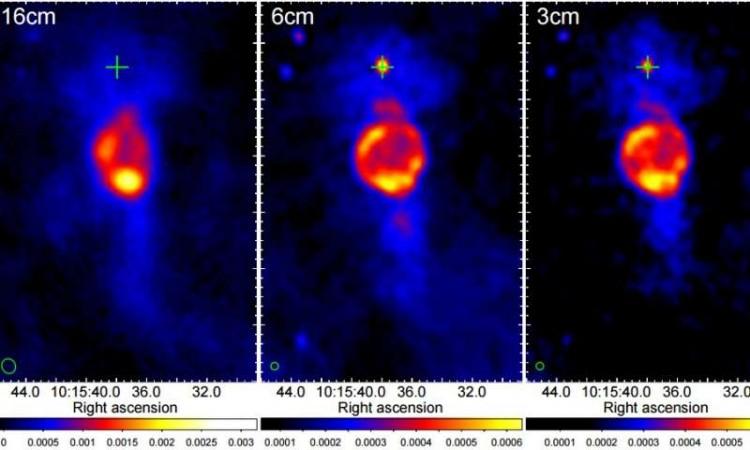![The Chandra image of G327.1-1.1 shows an outward-moving shock wave (faint red color) and a bright pulsar wind nebula (blue). [Representational image] pulsar, neutron star, polar wind nebula, space,](https://data1.ibtimes.co.in/en/full/651821/pulsar-neutron-star-polar-wind-nebula-space.jpg?h=450&l=50&t=40)
A synchrotron nebula -- dubbed G283.1−0.59 -- has been discovered by scientists. They claim it is linked to an energetic pulsar -- PSR J1015-5719.
Also Read: NASA's Kepler discovers 10 Earth-like planets in over 200 alien worlds
The pulsar PSR J1015-5719 is located 16,600 light years away from Earth and is 39,000 years old. The newly-found nebula, G283.1−0.59, is also a typical bubble-like structure.

Researchers from University of Hong Kong, led by C-Y Ng carried out this research. They spotted the polar wind nebula with the help of the Molonglo Observatory Synthesis Telescope as well as the Australia Telescope Compact Array, Phys.org revealed.
According to researchers, PSR J1015-5719 is situated in the head of the G283.1−0.59 nebula, which had a fan-shaped diffuse emission. The scientists also discovered a nebula which had -- a diffuse head, a circular bubble, and a collimated tail.
"We report the discovery of a synchrotron nebula, G283.1−0.59, associated with PSR J1015−5719. Radio observations using the Molonglo Observatory Synthesis Telescope and the Australia Telescope Compact Array at 36, 16, 6, and 3 cm reveal a complex morphology. The pulsar is embedded in the 'head' of the nebula with fan-shaped diffuse emission. This is connected to a circular bubble with a radius of 20 inches and a collimated tail extending over 1inch," the scientists stated in a paper.
The research points towards the nebula being a bow shock pulsar wind nebula (PWN). Such nebulae are characterised by broadband synchrotron radiation from radio to X-ray bands when they are formed as a result of interaction of pulsar wind with the ambient medium. The shape of the nebula's head was like a classical bow shock Phys.org revealed.
The researchers concluded that the newly-discovered nebula was similar to the new bow-shock PWN which was associated with the energetic pulsar PSR J1015-5719 based on its peculiar properties. The synchrotron nebula, G28.1-0.59, is a unique example of a slow-moving bow shock PWN in which the pulsar rotate axis misaligned with the proper motion direction.
"We suggest that this is a newly identified bow-shock PWN associated with J1015. Given its peculiar properties, a chance coincidence seems very unlikely," the paper quoted.
The PSR J1015-5719 pulsar is a rotating white dwarf or neutron star which is highly magnetised which emits electromagnetic radiation. The rotational periods of the neutron stars are short and they are very compact.

















